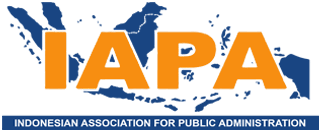THE USE OF AING BY NON-NATIVE SUNDANESE SPEAKERS IN THE CONTEXT OF FRIENDSHIP
DOI:
https://doi.org/10.30997/jsh.v14i2.6660Keywords:
aing, sundanes language, friendship, adaptation, non-nativeAbstract
Sojourn students will be faced with a new environment and culture. Interaction with native speakers of the regional language can be a factor that supports the form of adjustment in a new environment. The word “aing” as a first-person pronoun is part of the very rough level of Sundanese that should not be used carelessly. Apart from this meaning, it turns out that the use of the word foreign is often found among students in the Sundanese area. This study aims to determine how the description of the use of the word foreign by non-native Sundanese in the context of friendship relations. Through a qualitative approach, this research involved 36 non-native Sundanese students. Data collection was carried out by distributing a self-report questionnaire in the form of a Google Form consisting of 14 questions in the form of an open-ended question. The data obtained are interpreted into four discussion categories, namely "Understanding and Practice of Using Foreign Words", "Background for Using Foreign Words", "Offline & Online Interaction", and "Impact of Using Foreign Words". The results show that sojourn students understand when and how aing was used in friendly relations. This makes them more able to feel the positive impact on the friendships that are built when using aing in communication.
References
Arianto. (2015) “MENUJU PERSAHABATAN” MELALUI KOMUNIKASI ANTARPRIBADI MAHASISWA BEDA ETNIS. Jurnal Sosial Ilmu Politik Universitas Hasanudin, 1(2). https://journal.unhas.ac.id/index.php/kritis/article/view/16
Beißert, H., Gönültaş, S., & Mulvey, K. L. (2019). Social inclusion of refugee and native peers among adolescents: It is the language that matters! Journal of Research on Adolescence, 30(1), 219–233. https://doi.org/10.1111/jora.12518
Bhattarai, K., Karkee, R., Ghimire, A., Pyakurel, P., Prasad Sharma, P., Ballav Adhikari, T., & Shrestha, R. (2020). A Qualitative Study to Explore Adolescent Girls Belief on Menstruation and Health Seeking Behavior. Biomedical Sciences, 6(2), 31. https://doi.org/10.11648/j.bs.20200602.13
Carli, L. L. (1990). Gender, language, and influence. Journal of Personality and Social Psychology, 59(5), 941–951. https://doi.org/10.1037/0022-3514.59.5.941
Chairan, Y. A. (2021). Penggunaan Kata-kata Pengakrab dalam Komunitas Pemuda Sudiang. Skripsi-S1 Thesis. Universitas Hasanuddin. http://repository.unhas.ac.id/id/eprint/582
Dascal, M. (1985). Language use in jokes and dreams: Sociopragmatics vs Psychopragmatics. Language & Communication, 5(2), 95–106. https://doi.org/10.1016/0271-5309(85)90002-3
Dunbar, R. I. M. (2018). The Anatomy of Friendship. Trends in Cognitive Sciences, 22(1), 32–51. https://doi.org/10.1016/j.tics.2017.10.004
Fadhlurrahman, F. (2017, July 21). Mahasiswa dan Pekerja Pendatang Paling Banyak ke Bandung, Tapi Datanya Minim. Tribun Jabar. Retrieved from https://jabar.tribunnews.com
Gunardi, G. (2020, November 25). Undak Usuk Basa: Kunci Berbahasa Sunda. Retrieved February 8, 2021, from https://ketik.unpad.ac.id/posts/833/undak-usuk-basa-kunci-berbahasa-sunda-1
Gurkan, T., Ummanel, A., & Koran, N. (2021). A Qualitative Study on the Perception of Fatherhood. European Journal of Educational Sciences, 8(2), 42–59. https://doi.org/10.19044/ejes.v8no2a42
Hidayat, N. S. (2014). Hubungan Berbahasa, Berpikir, dan Berbudaya. Sosial Budaya, 11(2), 190–205. https://doi.org/10.24014/sb.v11i2.834
Husna, N. (2020). University Students’ Perception in Using English Swear Words (Vol. 408). https://doi.org/10.2991/assehr.k.200220.006
Iskandar, Z. (2012). Psikologi Lingkungan: Teori Dan Konsep. Bandung, Jawa Barat: Refika Aditama.
Iswatiningsih, D. Fauzan, F., & Pangesti, F. (2021). Ekspresi remaja milenial melalui penggunaan bahasa gaul di media sosial. KEMBARA: Jurnal Keilmuan, Bahasa, Sastra dan Pengajarannya (e-Journal), 7(2), 476-489. https://doi.org/10.22219/kembara.v7i2.18301
Kamilah, Fina. (2014). "Self-Reference Words Comparison Between Non-Native Sundanese Speaker and 5B Corpus". Retrieved February 17, 2021, from https://www.academia.edu/download/39637534/Self_Reference_Words_Comparison_Between_Non-Native__Sundanese_Speaker_and_5B_Corpus.pdf
Lingga, Ruth W. W., and Josetta M. R. Tuapattinaja. "Gambaran Virtue Mahasiswa Perantau." Predicara, vol. 1, no. 2, 24 Dec. 2012. Retrieved February 17, 2021, from https://www.neliti.com/publications/160294/gambaran-virtue-mahasiswa-perantau#cite
Matlin, M. W. (2012). Cognition (8th ed.). Hoboken, New Jersey: Wiley.
Matsumoto, D., & Juang, L. (2016). Culture and Psychology (6th ed.). Boston, MA: Cengage Learning.
Mahabbati, A. (2013). Language and Mind Menurut Vygotsky, Aplikasi terhadap Pendidikan Anak dan Kritinya. Jurnal Pendidikan Edukasia, 2(2), 1–14. http://staffnew.uny.ac.id/upload/132318126/penelitian/vygotsky0001.pdf
Maulana, A. (2021, April 14). Fenomena Kata Sapaan “Aing”, Kasar tapi Banyak Digunakan. Universitas Padjadjaran. Retrieved March 19, 2022, from https://www.unpad.ac.id/2021/04/fenomena-kata-sapaan-aing-kasar-tapi-banyak-digunakan/
Owens, R. E. (2016). Language Development: An Introduction, Global Edition (9th ed.). London, United Kingdom: Pearson.
Pratama, E. (2020, October). PRONOMINA PERSONA PERTAMA BAHASA JEPANG; WATASHI, BOKU, ORE, ATASHI DENGAN BAHASA SUNDA; ABDI, KURING, AING, DAN DEWEK DALAM PERCAKAPAN (KAJIAN SOSIOPRAGMATIK) (000026900). Repository Unpad. Retrieved from https://repository.unpad.ac.id/frontdoor/index/index/year/2020/docId/26900
Rizal, A. (2019, April 24). Pengguna Twitter di Indonesia Paling Banyak Pria daripada Perempuan - Semua Halaman. Info Komputer. https://infokomputer.grid.id/read/121705568/pengguna-twitter-di-indonesia-paling-banyak-pria-daripada-perempuan?page=all
Sugito, Z. R. (2017, May 4). Membebaskan “Aing” dari Belenggu Hierarki Bahasa Sunda. Tirto.Id. Retrieved from https://tirto.id/membebaskan-aing-dari-belenggu-hierarki-bahasa-sunda-cn5j
Shin, H. (2017). Friendship Dynamics of Adolescent Aggression, Prosocial Behavior, and Social Status: The Moderating Role of Gender. Journal of Youth and Adolescence, 46(11), 2305–2320. https://doi.org/10.1007/s10964-017-0702-8
Tenny, S., Brannan, G. D., Brannan, J. M., & Sharts-Hopko, N. C. (2021). Qualitative Study. In StatPearls. StatPearls Publishing. https://pubmed.ncbi.nlm.nih.gov/29262162/
Universitas Padjadjaran. (2020). Unpad Dalam Angka 2020. Retrieved February 18, 2021, from https://www.unpad.ac.id/universitas/data-fakta/unpad-dalam-angka-2020/
Downloads
Published
How to Cite
Issue
Section
License
Copyright (c) 2023 Jurnal Sosial Humaniora

This work is licensed under a Creative Commons Attribution-ShareAlike 4.0 International License.
Authors submitting manuscripts must understand and agree to copyright the manuscript of the article was transferred to OJS Djuanda University. All rights reserved. The copyright release statement for the Journal of Social Humanities is set out in the Agreement Transfer of Copyright. This work is licensed under Creative Commons Attribution-ShareAlike (CC BY-SA) version 4.0 where Author and Readers can copy and redistribute material in any media or format , as well as mixing, modifying and building materials for any purpose, but they must provide appropriate credit (citing articles or content), provides a link to the license, and indicates when changes have been made. If you mix, modify, or develop, the materials you have to distribute your contributions are under the same license as the originals.
















